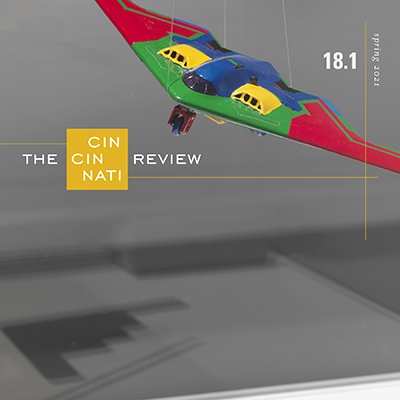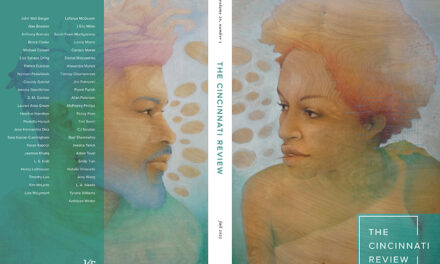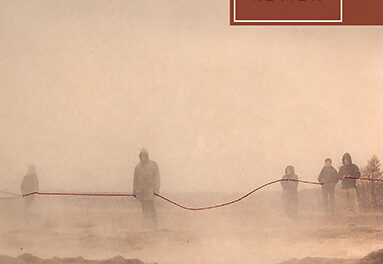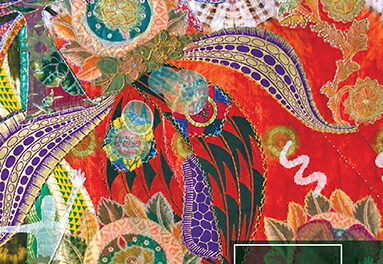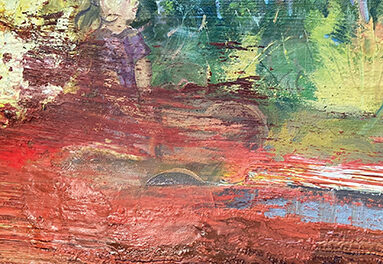We are pleased to share this review by Franny Zhang of Nafissa Thompson-Spires’s Heads of the Colored People (37Ink/Atria, 2018), which appeared in Issue 18.1 as part of a special multigenre review feature on art and activism (read the entire feature here):
When writers take up topics like racial or social justice, it’s easy for them to think that a serious approach is more appropriate than a humorous one. Late-night hosts may crack all kinds of wise about political malfeasance, but some subjects seem incompatible with funny business, their innate weightiness demanding a corresponding gravity of tone. Would you, for example, dare to tell a joke about a police shooting? In such cases, to make jest might appear to make light—or worse, fun.
Despite the high degree of difficulty in combining humor and social commentary, there are writers who succeed to exquisite ends. Zadie Smith’s White Teeth (Random House, 2000) is a classic of the genre, and Paul Beatty channeled satire to eviscerating effect in his masterful novel The Sellout (Farrar, Straus and Giroux, 2015), reviewed in these pages in Issue 12.2. Both books are set in a pre–Black Lives Matter world, and theirs and the movement’s natural heir may be Nafissa Thompson-Spires’s debut short-story collection, Heads of the Colored People. In twelve hilarious and ferocious stories, this book captures the modern complexities of being Black in America, while using humor’s unique properties to challenge dominant narratives and demand fuller representation.
Since the 2012 killing of Trayvon Martin, young Black men in hoodies have become a de facto and tragic symbol of police brutality, and their image lies at the heart of the collection’s title story, fully rendered as “Heads of the Colored People: Four Fancy Sketches, Two Chalk Outlines, and No Apology.” As promised, the story unfolds in fragments and impressions, but most of the action centers on Riley, a “well-read, self-aware, self-loving black man with blue contact lenses and blond hair and a periwinkle suit,” who starts the story dressed as a Japanese anime character, on his way to a Los Angeles convention center. He is a young Black man wearing what can only be described as the opposite of a hoodie, and Thompson-Spires deliberately positions Riley in contrast to what you—“and yes, there is some judgment in the use of ‘you’”—might imagine when you picture someone of his age and demographic. Riley is not a symbol or type; he is gloriously individual—aided in part by how funny he is.
What makes Riley funny? Well, what makes anything funny? Comedians and philosophers can sweat the answer, but conventional wisdom holds that to be funny, something has to be original. Jokes are never quite as funny the second time around, and Riley’s humorous qualities, his unique delights and depths, are what help him register as original. Riley, with his contradictions and self-awareness, who “was not self-hating; he was even listening to Drake,” is funny, and because he is funny, he is also himself. In this, he becomes singular and subversive, allowing Thompson-Spires to unseat broad perspectives in favor of individual experience.
If watching cringeworthy shows like The Office has taught us anything, it’s that there’s considerable comedy to be wrung from discomfort, and this form of humor is on full display in the story “Belles Lettres.” This laugh-out-loud piece is constructed as a series of letters between two mothers, each one written in a fit of passive-aggressive pique and then exchanged via their daughters’ backpacks at school. In one letter, mother Lucinda claims that “it is true that Christinia’s hamster died recently, but it is absolutely not true that it died at Chrissy’s hand,” to which the other mother, Monica, replies, “I’m absolutely sure that Fatima wouldn’t tell stories about Christinia, the hamsters, or the microwave incident if they weren’t based on something Christinia had said first.” This back-and-forth sniping is delicious, but it becomes increasingly uneasy as the story progresses. It turns out that these mothers are both Black and that their daughters are the only two Black students in their school. Some readers might wonder what is gained by portraying pettiness between two Black women. It’s funny, certainly, but does this humor undercut a need for solidarity or positive portrayals of Black women? Such concerns have their place, but in this case, Thompson-Spires does not limit her storytelling to a rosy picture. Black women, Black mothers, are often subject to absurd standards and unfair scrutiny, and “Belles Lettres” offers the relief of two Black mothers being normal people, with all their failings and foibles. In their humor, there is humanity—a requirement for any good story.
In addition, lest we forget, humor is akin to laughter, which is akin to joy. Too often joy is an afterthought in writing about “serious” topics. There’s much cause for sorrow and rage in the effects of racist structures on Black characters, but Thompson-Spires wisely sees a need to leaven the narrative. Throughout her stories, the pursuit of happiness is central to her characters’ being—in whatever form it may take. Growing up, Fatima (of “Fatima, the Biloquist: A Transformation Story” and one of the daughters in “Belles Lettres”) decides that she wants to “become black, full black, baa baa black sheep black, black like the elbows and knees on praying folk black, if only someone would teach her.” Another teenager, Raina (“Whisper to a Scream”), starts an ASMR channel in an attempt to find her voice and freedom, persevering despite needing to ignore “anyone who posted comments with the N-word, monkey references, and black-fetish cracks.” In “This Todd,” a woman with a disability fetish wonders why her boyfriend “could never balance his optimism about himself with his need for help. He was always like . . . ‘No, Kim, I don’t want to play candy striper. No, you can’t remove the bandages.’” These stories are obviously funny—with some discomfort thrown in for good measure—and while joy for these characters is not easily attained, they persist in their search for it. To not allow sorrow to dominate is a crucial component of resistance, and Thompson-Spires does vital work to ensure that joy is fully represented—as it should be.
Thompson-Spires even dares to tell a joke about a police shooting: Riley, that young Black man without a hoodie, falls victim to the same tragedy as Travyon Martin and others clad in hoodies. In the aftermath, “the picture the Associated Press chose came from a Throwback Thursday photo that Riley had posted on social media. . . . His mother, and girlfriend, Paris, explained repeatedly that he was not dressed as a thug, but as nineties Justin Timberlake.” It’s a gut punch of a joke, beautifully crafted out of grief, absurdity, and recognition, and it tears down any barriers between sadness and humor. The joke works on multiple layers, combining a reminder of how silly Timberlake looked in his cornrows-and-bandannas phase with a sharp critique of how Black men are portrayed by the media. By setting these elements alongside each other, Thompson-Spires speaks to the unexpected nuances of tragedy and finds laughter even in the deepest grief.
In the worst moments, there are still opportunities for laughter. Humor does not exist in contradiction to seriousness; instead, they together form the complex truth of being alive. Too often and for too long, the prevailing narratives of marginalized people have tended toward the tragic, biased, and negative, and against such portrayals, humor becomes a powerful and necessary counterweight. The originality, humanity, and joy that humor embodies becomes a mode of defiance, a way of ensuring every part of a story is told and celebrated. Writers like Smith, Beatty, and Thompson-Spires continue to show how humor in literature can be used to achieve brave and expansive storytelling, the purview of any “serious” writer. After all, what could be more appropriate than using a sidelined art form to tell a marginalized story?
Franny Zhang is a writer and editor based in Boston. Her work has appeared in Mount Hope, Entropy, Solstice, and other publications, and she was a regular contributor to the Ploughshares blog. She is at work on a short-story collection and a libretto for contemporary chamber opera.

